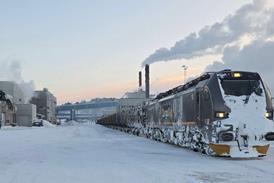
Poland’s Małopolskie voivodship created its own regional passenger operator Koleje Małopolskie with effect from January 1, with a view to a phased takeover of services from PR around a year later. The voivodship owns four DMUs and 11 EMUs and has 17 EMUs on order, but estimates that it needs at least 50 trainsets.
Slovakia is to create a unified transport authority merging the rail, aviation and navigation authorities from January.
On December 5 the Council of the European Union formalised the adoption of the TEN-T guidelines and the related Connecting Europe Facility financial instrument.
Russia and South Korea have signed an MoU that would allow South Korea to invest in the Rajin railway project in North Korea (RG 11.13 p8).
To comply with EU rules on vertical separation, PKP Cargo has created the Cargotor subsidiary to take over tracks it currently manages. EIB has agreed a 200m złoty loan for fleet upgrading.
The EU’s TEN-T programme is to provide €8·1m for double-tracking the 10 km Spoleto – Campello line and the 6·2 km Castelplanio – Montecarotto lines in Italy, and €6·6m to double-track the Lunghezza – Guidonia line. Installation of ERTMS on Denmark‘s Langaa – Frederikshavn line has been allocated €11·9m.
On November 29 South Africa’s President Jacob Zuma opened a sinter plant at the Kalagadi manganese mine, which will be served by a 23 km rail connection to Transnet’s main line to Port Elizabeth. Gibb is engineering and construction management contractor.
On December 9 a third track was brought use on the 8·6 km between Antibes and Cagnes-sur-Mer, enabling SNCF to operate five TER services an hour in the peaks. This is due to increase to six upon completion of work to install noise barriers and cover the railway through Villeneuve-Loubet, part of a €136·7m programme of works to which the Provence-Alpes-Côte d’Azur region is contributing €41·8m.

















